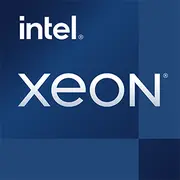Intel Xeon E3-1515M v5

Intel Xeon E3-1515M v5: A Mobile Workhorse for Professionals in 2025
Analysis of capabilities, use cases, and relevance of the processor in the 2025 market conditions
Architecture and Technology Process: The Foundation of Reliability
The Intel Xeon E3-1515M v5 processor, released in 2016 on the Skylake architecture, remains a niche solution for mobile workstations even in 2025. Its key features include:
- 4 cores and 8 threads with a base frequency of 2.8 GHz and Turbo Boost up to 3.5 GHz.
- 14 nm technology process, which was considered advanced at the time of release, but by 2025 is overshadowed by modern 5nm (Apple M4) and 4nm (AMD Zen 5) solutions.
- Integrated graphics Iris Pro P580 with 72 execution units and 128 MB of eDRAM. This allows for 4K display work, video processing, and even basic VR application support.
Architecture Features:
- Support for ECC memory — critically important for workstations where data errors are unacceptable (e.g., engineering calculations, rendering).
- Hyper-Threading and Turbo Boost 2.0 technologies optimize multithreaded performance and adaptively boost frequency under load.
Power Consumption and TDP: Balancing Power and Autonomy
With a TDP of 45 W, the processor is designed for laptops with enhanced cooling systems — workstations and premium gaming models. For comparison:
- Modern Apple M4 (2025) at 20-25 W TDP demonstrates comparable performance in multithreaded tasks.
- AMD Ryzen 7 7840U (TDP 28 W) offers 8 Zen 4 cores but lacks ECC support.
Energy Efficiency:
- In idle mode, the processor lowers its frequency to 800 MHz thanks to Enhanced SpeedStep.
- Under peak load (e.g., rendering in Blender), power consumption reaches 50-55 W, necessitating active cooling.
Performance: Real Tasks and Turbo Mode
Office Work and Multitasking:
- With 20+ browser tabs open and parallel work in Excel/Word, the processor maintains responsiveness. Geekbench 6 Single Core (1322) is close to Intel Core i5-1240P (2023), which is adequate for comfortable work.
Multimedia:
- Rendering a 10-minute video in Premiere Pro (1080p): 8-10 minutes compared to 4-5 minutes with Apple M3 (2023).
- Iris Pro P580 can handle H.265 encoding but falls short compared to discrete NVIDIA RTX A500 GPUs (2025).
Gaming:
- CS2 on medium settings (1080p): 45-55 FPS.
- Cyberpunk 2077 (Low, 720p): 25-30 FPS — acceptable for casual sessions but not for enthusiasts.
Turbo Boost:
- In turbo mode, the core frequency rises to 3.5 GHz, but prolonged load (over 5 minutes) may lead to throttling due to overheating.
Use Cases: Who is the E3-1515M v5 Suitable For?
1. Engineers and Designers: ECC memory support and stability in CAD applications (AutoCAD, SolidWorks).
2. On-the-go Video Editors: Iris Pro P580 speeds up rendering, and the 45 W TDP allows for thinner laptop designs compared to models with discrete GPUs.
3. Data Professionals: Local processing of medium data volumes in Python/R without server resources.
Not Suitable For:
- Hardcore gamers (discrete graphics required).
- Users who need over 6 hours of battery life.
Battery Life: The Price of Performance
Laptops with the E3-1515M v5 are equipped with 70-90 Wh batteries. In real conditions:
- Web browsing: 4-5 hours.
- Working in Adobe Photoshop: 2.5-3 hours.
- Power-saving mode (disabling Turbo, reducing brightness): up to 6 hours.
Power-Saving Technologies:
- Intel Speed Shift — dynamic frequency management.
- Panel Self-Refresh — reduces display power consumption.
Comparison with Competitors
Intel Xeon E3-1515M v5:
- Cores/Threads: 4/8
- TDP: 45 W
- ECC Memory: Yes
- Gaming (CS2, 1080p): 45 FPS
- Laptop Price (2025): $1600-2200
AMD Ryzen 7 PRO 6850H:
- Cores/Threads: 8/16
- TDP: 45 W
- ECC Memory: Yes
- Gaming (CS2, 1080p): 60 FPS (Radeon 680M)
- Laptop Price (2025): $1400-2000
Apple M3 (2023):
- Cores/Threads: 8/8 (4+4)
- TDP: 20 W
- ECC Memory: No
- Gaming (CS2, 1080p): 40 FPS (emulated)
- Laptop Price (2025): $1700-2500
Conclusions:
- For ECC and reliability — choose Xeon.
- For multithreading — choose Ryzen.
- For battery life — choose Apple.
Pros and Cons
Strengths:
- Support for ECC memory.
- Strong integrated graphics for its class.
- Optimization for professional software (Certified for SolidWorks, AutoCAD).
Weaknesses:
- High power consumption compared to modern processors.
- 4 cores compared to 8-12 in competitors in 2025.
Laptop Selection Recommendations
1. Device Type: Mobile workstation (Dell Precision 3510, HP ZBook 15 G3).
2. Cooling: Mandatory dual fans and copper heat pipes.
3. Memory: Minimum 32 GB DDR4 with ECC.
4. Storage: 1 TB NVMe SSD (preferably with RAID 1 for reliability).
5. Display: 4K IPS with 100% sRGB coverage.
Average price for new devices: $1800-2500 (April 2025).
Final Conclusion
The Intel Xeon E3-1515M v5 in 2025 remains a choice for professionals who value stability and specialized features (ECC, software certification). While it falls behind modern CPUs in energy efficiency and multithreading, it remains indispensable in the niche of mobile workstations. If you need a laptop for CAD modeling, on-site rendering, or data processing with guaranteed accuracy — this processor justifies the investment. For all other scenarios (gaming, office work, media consumption), it’s better to choose more modern and economical solutions.
Basic
CPU Specifications
Memory Specifications
GPU Specifications
Miscellaneous
Benchmarks
Compared to Other CPU
Share in social media
Or Link To Us
<a href="https://cputronic.com/en/cpu/intel-xeon-e3-1515m-v5" target="_blank">Intel Xeon E3-1515M v5</a>